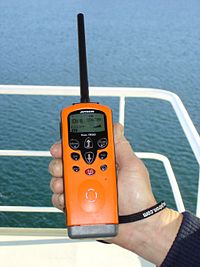
Photo from wikipedia
Traffic signs have come a long way since the first automobile was invented. They have long served the purpose of warning and guiding drivers and also enforcing the traffic laws… Click to show full abstract
Traffic signs have come a long way since the first automobile was invented. They have long served the purpose of warning and guiding drivers and also enforcing the traffic laws governing speed, parking, turns, and stopping. In this study, the authors discuss the issues and challenges facing current traffic signs, and how it will evolve into a next-generation traffic sign architecture using advanced wireless communications technologies. With technological advances in the areas of wireless communications and embedded electronics and software, we foresee that, in the future, digital traffic sign posts will be capable of transmitting the traffic sign information wirelessly to road users, and this will transform our roads into intelligent roads, where signs will appear promptly and automatically on in-vehicle displays to alert the driver. There is no longer the need to watch out for traffic signs since the detection will be automatic and performed wirelessly. This transformation will lessen burden on the drivers, so that they can then focus more on the traffic ahead while driving. Also, this evolution into wireless digital sign posts will fit well with the vision of future smart cities, where smart transportation technologies will be present to transform how we drive and commute, yielding greater safety, ease, and assistance to drivers.
Journal Title: IET Networks
Year Published: 2019
Link to full text (if available)
Share on Social Media: Sign Up to like & get
recommendations!